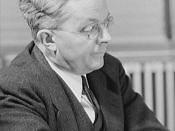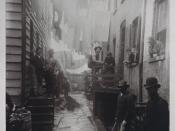"With a picture sympathetically interpreted, what a lever we have for social uplift." -Lewis Hine
Photographs were on the periphery of American's lives as a sort of visual undergrowth that is sometimes underestimated. Photography not only had an influence on how people saw the world, but on what they believed. They're the pictures that Americans saw on the front page of their newspapers that forced Americans to form opinions and take action. Throughout history, photography has proved itself to be an effective medium for improving America both morally and socially, thus showing that photography is a form of communication that is equally as strong as any other form of communication.
In the first decade of the 19th century, photographs were just beginning to enter into many aspects of American life. They came through the mail, and pictures appeared in newspapers and magazines. Photography was starting to have an influence not only on how people saw the world, but on what they believed.
From the invention of photography in the early 19th century, until the occurance at Birmingham in the late 1950s, the art of pictures/photography had come a long way in capturing the public's eye.
Writers had been describing problems of America, such as the sufferings of the poor, since before the Decleration of Indepedence. But no one yet used a photograph to advocate such an immense social change. In 1890, soon after it became possible to print photographs in books, Jacob Riis included pictures in his influential work on housing reform. Jacob A. Riis was the first reformer to effectively convey his message to a wide public that the living conditions endured by the urban poor were unacceptable. His use of the relatively new medium of photography brought an unprecedented power to his message. His most popular work,



Plagiarism
This essay is plagiarized from another source -- http://chnm.gmu.edu/fsa/
2 out of 2 people found this comment useful.